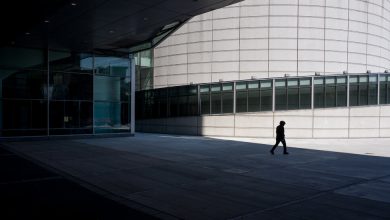Surge of Omicron Infections Prompts Lockdowns in China

BEIJING — Several of China’s largest factory cities have ordered a lockdown, halting production of Toyota cars and Apple iPhones. Theaters, cinemas and many restaurants have closed in Shanghai. The northeastern province of Jilin on Monday banned its 24 million residents from leaving the province or traveling between cities.
China is grappling with its largest surge of Covid-19 infections since the coronavirus first emerged more than two years ago in central China. Sustained outbreaks in two-thirds of the country’s provinces are proving the toughest test yet of China’s zero-tolerance coronavirus policy.
Even as countries in the West are now loosening or abandoning mask mandates and other measures, Chinese officials are implementing some of their most stringent methods yet. That is in large part because China can’t afford to lift restrictions.
The government has been concerned about comparatively lower rates of vaccination among China’s older adults. The country also has far fewer intensive care hospital beds compared to its population than most industrialized countries. In China’s vast rural areas, hospitals and medical facilities are often basic, and a major outbreak could quickly overwhelm hospitals.
The United States and other Western countries have suffered far higher rates of infection and deaths over the past two years than China, and still have higher rates now. But the seven-day average rate of new cases in mainland China, now at 1,584, has more than quintupled in recent days.
For many residents in China, the rapid spread of the virus has been unsettling.
“Because of the large number of cases in a short period of time, it is inevitable that there will be some panic all over the country, and Shanghai is no exception,” said Dr. Zhang Wenhong, a prominent infectious disease expert in Shanghai, in a post on his social media account on Monday.
China has responded to the current surge in cases by mobilizing its vast Communist Party apparatus to deploy workers and resources. In Jilin Province, where many cases have been recorded, workers are building temporary facilities to house thousands of people who test positive. Across the country, workers are corralling and testing millions of citizens every day. But that testing program is starting to be overwhelmed.
“We have noticed that there have been problems such as long lines and slow test results at many testing sites in the past two days,” said Lu Taohong, deputy director of the Shanghai Municipal Health Commission, at a news conference on Sunday night.
China’s virus containment strategy is focused on moving quickly to lock down buildings or neighborhoods. In response to even a single case, officials may seal all the entrances to a store, office building or even convention center. Everyone inside must then stay there for up to several days as they are tested for the coronavirus and sent into isolation if their results are positive.
In Shanghai, many foreign-owned businesses stockpiled mattresses last week in case their employees were trapped in their factories or their offices this week. Multinationals there then told their employees to work from home this week.
In Guangzhou, the municipal government on Friday sealed off the world’s largest convention center, which was holding a beauty products exhibition. Videos circulating on Chinese social media platforms showed crowds of stranded convention goers milling around and looking for exits in attempts to evade the lockdown.
The outbreak’s rapid spread and the government’s tough response have left some residents worried about the effect of lockdowns on their livelihoods.
Li Yanhua, a grocery store manager in Shanghai, was notified on Saturday night that his neighborhood was locked down and residents would have to be tested for Covid.
“It was all of a sudden, we are not even prepared — my family has not enough vegetables and daily necessities,” Mr. Li said. “My store is closed, but we still need to pay rent.”
Still, such measures have also been widely accepted as necessary for the good of public health.
Li Junyan, a 33-year-old businessman in the locked down city of Changchun in northeastern China, has had to stop shipping fruit and health products to online customers because of travel restrictions but he is philosophical about it. “There must be losses to my business, but there is nothing much I can do,” he said.
He and the other three other members of his family have been confined at their apartment since Saturday. “In order not to cause chaos to the society, I’ll stay at home for the public’s sake.”
Faye Li, 27, a brand management specialist at a food company in Shenzhen, said she wanted to spend time downtown over the weekend with two friends but canceled the plan because the government banned indoor dining. But she accepted this.
“The effect of the outbreak is small, and I’m actually not very worried, ” Ms. Li said. “I’ve been used to this.”
Chinese doctors and health officials insist that continued mass testing, quarantines and lockdowns are necessary. Opening up too soon could be disastrous, they warn.
Many of the cases in recent days have been the Omicron variant, which while highly transmissible, has also tended to make people less sick than earlier variants of the coronavirus. A little more than half of those infected with the coronavirus in recent days in China do not show symptoms, according to data released by the government.
But they are still infectious.
“The proportion of asymptomatic infections is high, the spread is hidden, and early detection is difficult,” said Wu Fan, vice dean of Shanghai Medical College at Fudan University, at a government news conference on Sunday. “It is not enough to simply screen in key areas or populations — it is necessary to reduce or slow down the mobility of people.”
After scandals involving citywide lockdowns in which people went hungry in their homes or even died for lack of medical care, notably in Xi’an, central government leaders have ordered local officials to use greater caution when imposing such restrictions.
Premier Li Keqiang said in an annual policy speech last week that the goal of China’s pandemic policies was “to protect people’s life and health, keep up the normal running of work and life, and ensure the security of industrial and supply chains.”
But the rapid increase in infections threatens to undo that progress. Dr. Zhang, the Shanghai expert, has been one of the few prominent advocates of easing “Covid zero” precautions, but even he said in an online posting on Monday that now is not the time for that.
“It is very important for our country to continue to adopt the strategy of covid-zero in the society in the near future to suppress the fifth wave of the extremely fast-spreading Omicron epidemic to a completely controllable level,” he wrote. “But this does not mean that we will permanently adopt the strategy of citywide lockdown and full testing.”
Shenzhen, a vast metropolis of nearly 20 million people that is China’s tech center and adjacent to Hong Kong, locked down residents on Sunday night. It stopped buses and subways and ordered businesses to close except for supermarkets, farmers’ markets, pharmacies, medical institutions and the port, which is one of the world’s largest.
Dongguan, another huge factory city that is next to Shenzhen, imposed a similar lockdown on Monday.
Particularly in southern China, many have reacted to the Omicron outbreak by blaming nearby Hong Kong, where a large epidemic has overwhelmed hospitals and morgues, largely because the vaccination of older residents has lagged.
Hu Xijin, a nationalistic columnist, complained in a post on his social media account on Sunday: “Hong Kong brought down Shenzhen.”
Li You, Amy Chang Chien, and Joy Dong contributed research.





